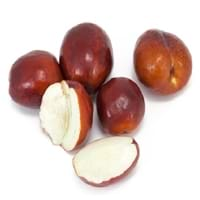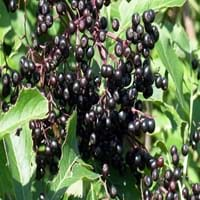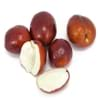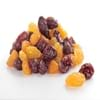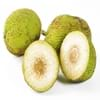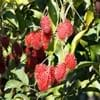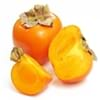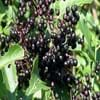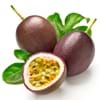quả táo ta và cơm cháy
Lợi ích
lợi ích sức khỏe
ngăn ngừa ung thư, điều trị tiêu chảy, Cải thiện sức mạnh cơ bắp, sức khỏe cho gan, Duy trì cân bằng nội tiết, Giảm căng thẳng thần kinh, Giảm các vấn đề lưu thông máu, giảm căng thẳng, Quy định của nhịp tim, Điều trị hysteria
ngăn ngừa ung thư, chăm sóc tim
lợi ích chung
đặc tính chống oxy hóa, trợ giúp tiêu hóa, Điều trị cảm cúm, Giúp giảm cân, tăng cường xương, Điều trị cảm lạnh thông thường
đặc tính chống oxy hóa, đặc tính chống viêm, Tăng hệ miễn dịch, Điều khiển lượng đường trong máu, chữa sốt, trợ giúp tiêu hóa, Chăm sóc mắt, Các trận đánh chống lại nhiễm trùng, Điều trị cảm cúm, Giúp giảm cân, Duy trì mức cholesterol khỏe mạnh
lợi ích Skin
Hồi cháy nắng, hydrat da, giảm nếp nhăn, trẻ hóa da, phục hồi da
lợi ích chống lão hóa, trẻ hóa da
lợi ích tóc
Đẩy mạnh hơn và tóc khỏe mạnh, Bảo vệ tóc
Đẩy mạnh hơn và tóc khỏe mạnh
dị ứng
Các triệu chứng dị ứng
đau bụng, khó thở, Bệnh tiêu chảy, nổi mề đay, Ngứa mắt, Ngứa mũi, Nghẹt mũi, Đỏ mắt, Sổ mũi, Hắt xì, Thở khò khè
đau bụng, hen suyễn, NA, Hắt xì, Viêm họng
Tác dụng phụ
Giảm lượng đường trong máu, đau đầu dữ dội
Bệnh tiêu chảy, buồn nôn, nôn
recommeded cho
Phụ nữ mang thai
Vâng
Vâng
Phụ nữ cho con bú
Không có sẵn
Không có sẵn
Thời gian tốt nhất để ăn
Như một món ăn trong buổi chiều muộn, Không dùng vào ban đêm và trước khi đi ngủ, thời gian buổi sáng (trước giờ ăn trưa), Nghiêm tránh dạ dày trống rỗng
Như một món ăn trong buổi chiều muộn, Không dùng vào ban đêm và trước khi đi ngủ, Ăn những cái mới, tránh pha trộn với bất kỳ loại thực phẩm khác, không ăn sau bữa ăn., thời gian buổi sáng (trước giờ ăn trưa)
Dinh dưỡng
phục vụ Kích thước
100g
100g
carbs
20,23 g
12
18,40 g
16
Chất xơ
Không có sẵn
7,00 g
4
Chất đạm
1,20 g
19
0,66 g
99+
Protein Tỷ số carb
0,06
21
0,04
24
Vitamin
Vitamin A (Retinol)
2,00 mcg
33
30,00 mcg
17
Vitamin B1 (Thiamin)
0,02 mg
38
0,07 mg
11
Vitamin B2 (Riboflavin)
0,04 mg
23
0,06 mg
16
Vitamin B3 (Niacin)
0,90 mg
11
0,50 mg
30
Vitamin B5 (Pantothenic Acid)
Không có sẵn
0,14 mg
99+
Vitamin B6 (pyridoxin)
0,08 mg
19
0,23 mg
6
Vitamin B9 (axit Folic)
Không có sẵn
6,00 mcg
29
Vitamin C (ascorbic acid)
69,00 mg
9
36,00 mg
23
Mập
0,20 g
33
0,50 g
18
khoáng sản
kali
250,00 mg
27
280,00 mg
21
Bàn là
0,48 mg
26
1,60 mg
8
sodium
3,00 mg
17
6,00 mg
14
canxi
21,00 mg
21
38,00 mg
9
magnesium
10,00 mg
25
5,00 mg
30
kẽm
0,05 mg
28
0,11 mg
22
Photpho
23,00 mg
22
39,00 mg
9
mangan
0,08 mg
34
Không có sẵn
Đồng
0,00 mg
99+
0,06 mg
36
Selenium
Không có sẵn
0,60 mcg
10
Axit béo
Omega 3
0,00 mg
38
85,00 mg
9
6s Omega
0,00 mg
99+
162,00 mg
12
sterol
Hàm lượng nước
77,86 g
99+
79,80 g
99+
Tro
0,51 g
25
0,60 g
20
Năng lượng
phục vụ Kích thước
100g
100g
Calo trong trái cây tươi với Peel
79,00 kcal
8
73,00 kcal
11
Calo trong trái cây tươi mà không Peel
Không có sẵn
Không có sẵn
Calo trong đông lạnh mẫu
Không có sẵn
Không có sẵn
Năng lượng trong mẫu khô
287,00 kcal
19
340,00 kcal
12
Năng lượng trong Mẫu đóng hộp
Không có sẵn
Không có sẵn
Calo trong thực phẩm
Calo trong nước trái cây
Không có sẵn
200,00 kcal
4
Calo trong Jam
Không có sẵn
280,00 kcal
12
Calo trong Pie
Không có sẵn
310,00 kcal
16
Đặc điểm
Kiểu
cây ăn quả
quả mọng
Mùa
mùa thu, Mùa hè
mùa thu
giống
Mật ong Jar, đường mía, Li, Sơn Tây Li, Sherwood, Chico, Silverhill, Tigertooth, Winter Delight và Lạng
Adams, Black Beauty, Black Lace, Johns, Nova, Variegated và York
không hạt giống
Không
Không
Màu
màu xanh lá, đỏ, Màu vàng
Đen, đỏ
bên trong màu
trắng
màu đỏ sậm
hình dáng
Tròn
Tròn
Kết cấu
Giòn
rôm rả
Nếm thử
Ngọt
rôm rả, Ngọt
Gốc
Syria
Châu Âu
mọc trên
Cây
Cây
Canh tác
Loại đất
cát, Thoát nước tốt
cát, Thoát nước tốt
pH đất
5.5-6.5
5.5-6.5
Điều kiện khí hậu
Ấm áp cho khí hậu nóng
Ấm áp cho khí hậu nóng
Sự kiện
Sự thật về
Character length exceed error
- Theo một niềm tin mê tín dị đoan, "cây đàn anh" được cho là để tránh ảnh hưởng xấu và cung cấp bảo vệ từ phù thủy.
- Chi nhánh từ cây của nó cũng được sử dụng để làm cho fujara, koncovka và sáo Slovakia khác.
Trong Đồ uống có cồn
Rượu nho
Vâng
Vâng
bia
Vâng
Vâng
Spirits
Không
Vâng
cocktails
Vâng
Vâng
Sản lượng
Top sản xuất
Trung Quốc
Chủng Quốc Hoa Kỳ
Các nước khác
Bangladesh, Ấn Độ, Iran, Hàn Quốc, Lebanon, Pakistan
Colombia, Ấn Độ, Mexico
Lên trên nhập khẩu
Chủng Quốc Hoa Kỳ
Không có sẵn
Lên trên xuất khẩu
Trung Quốc
Không có sẵn
Tên khoa học
Tên thực vật
chi táo ta zizyphus
Sambucus nigra
Từ đồng nghĩa
Chi táo ta jujuba hay chi táo ta Mauritania hoặc Zizyphus jujuba
Không có sẵn
Phân loại
Miền
Eukarya
Eukarya
Vương quốc
Plantae
Plantae
Subkingdom
Tracheobionta
Tracheobionta
phân công
Magnoliophyta
Magnoliophyta
Lớp học
Magnoliopsida
Magnoliopsida
Thứ hạng
phân lớp hoa hồng
Asteridae
Gọi món
Rosales
bộ tục đoạn
gia đình
Rhamnaceae
họ ngũ phúc hoa
giống
chi táo ta
Sambucus
Loài
Z. zizyphus
S. nigra
generic Nhóm
Không có sẵn
Moschatel
